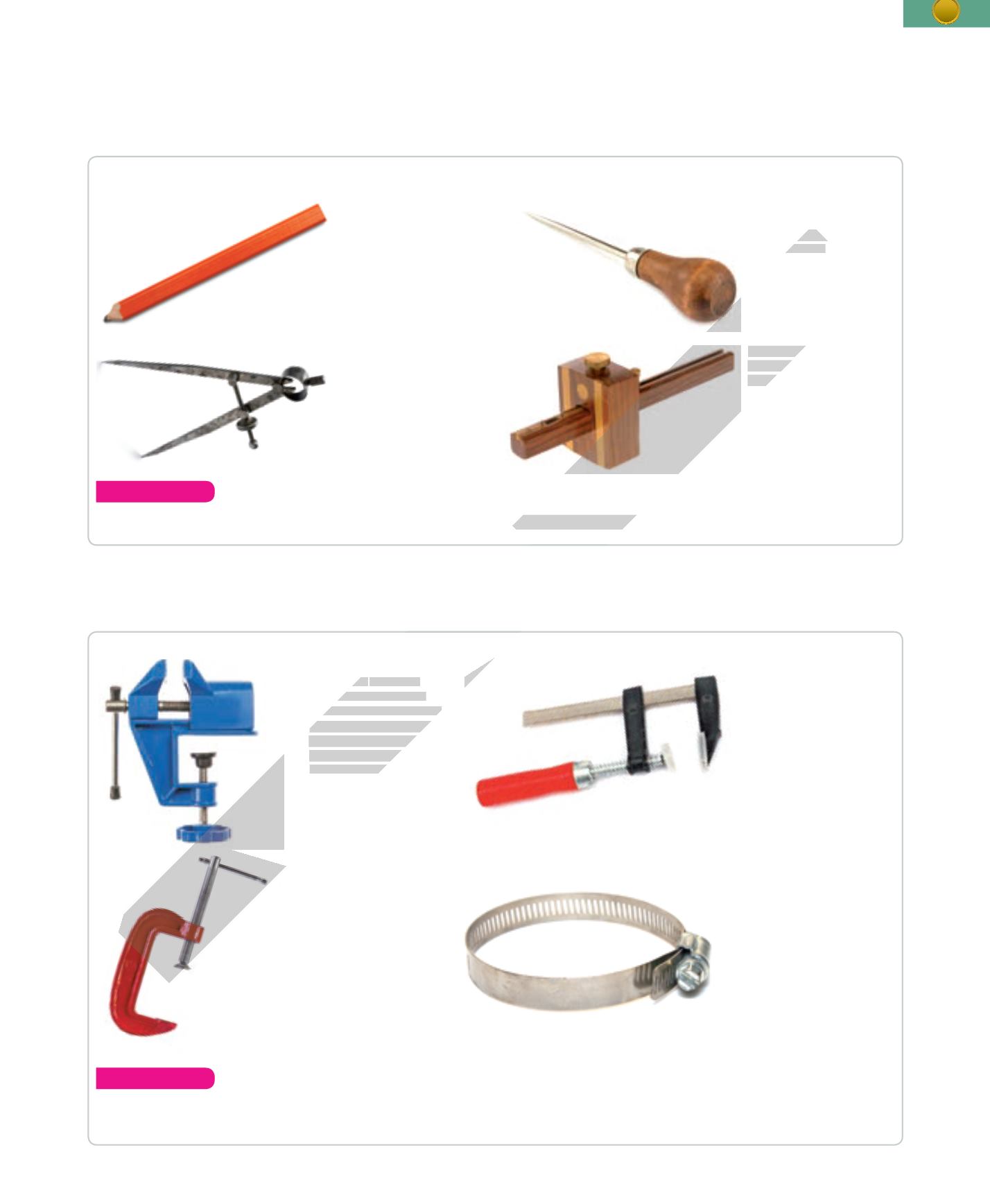
11
3. Wood and its derivatives
www
Understand
22.
When you use these tools, which one(s) will you have to be careful with? Why?
5.2.
Drawing marks and lines
Once we’ve measured and studied the best distribution of the pieces on the
material, we draw marks and lines for the pieces we want.
Understand
23.
When you clamp objects with this equipment you can damage them. Find out how you can protect them when
you work.
Equipment and tools
Bench vice
: Fixed to
the workbench. Turn
the handle clockwise to
move the mobile clamp
towards the fixed clamp
and the piece will be fixed
between them.
C-clamp
: Consists of a
fixed head and a screw.
Turn the screw to clamp
the piece.
Bar clamp
: Used to clamp
pieces to the workbench
or to clamp together two
pieces that we want to
glue. It consists of a fixed
head and a tail stop. The
tail stop slides along the
bar to the fixed head. You
screw the handle to clamp
the piece between the two
parts.
Ring clamp
: Used to
clamp circular pieces with
different diameters.
Equipment
5.3.
Clamps
We work with wood at a
workbench
or
table
.
Carpenter’s pencil
: Oval
shaped to avoid slipping
on the wood. The lead
is strong so you can use
it on different surfaces
(stone, wood, paper or
cardboard). You sharpen it
with a special knife.
Awl or punch
: Used to
make a small mark in the
wood so you know where
to drill a hole.
Compass
: Used to draw
circles and arcs and
transfer measurements.
Marking gauge
: Used to
draw lines parallel to the
edge of the board.
ADVANCE EDITION


